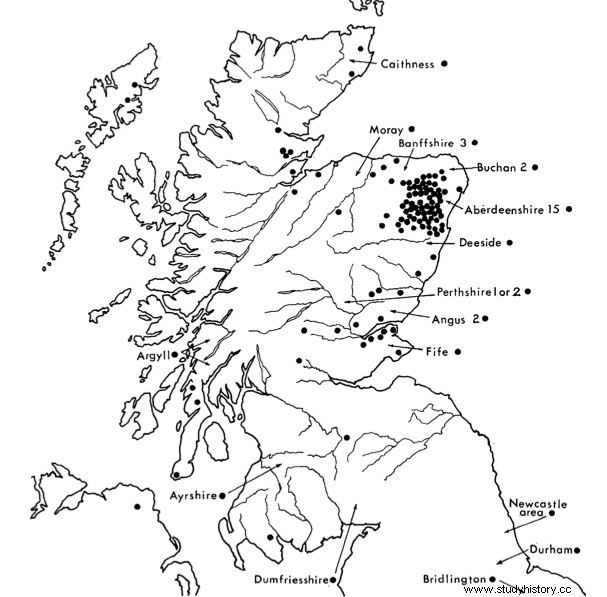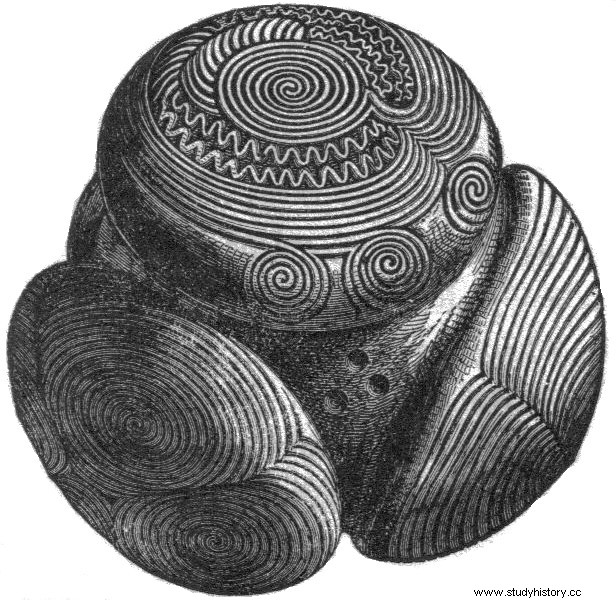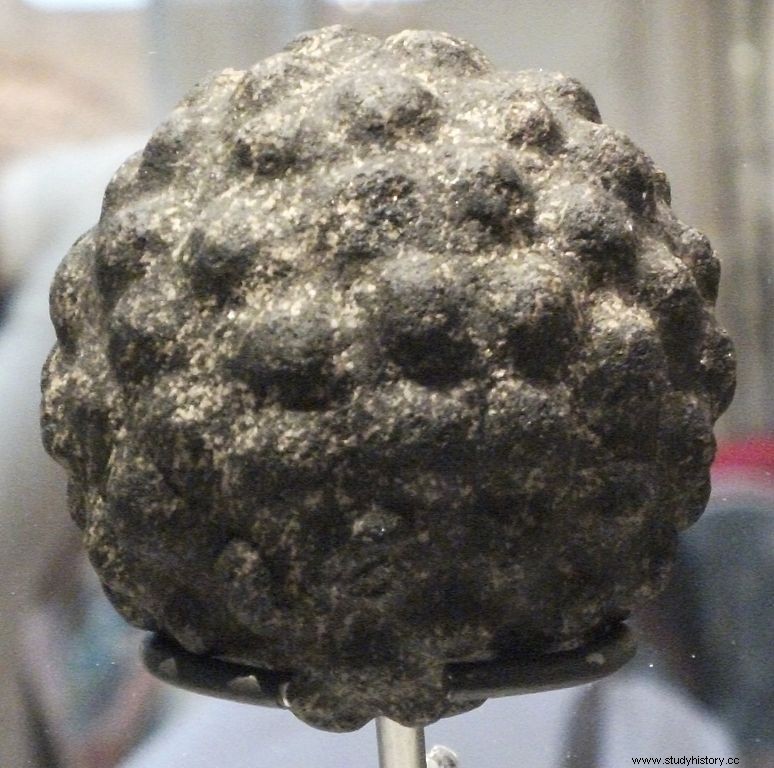A common feature of petrospheres, prehistoric balls of carved stone that have been found in different shapes and sizes in many parts of the world, is the unknown about their function.
Of all of them, those discovered mainly in Scotland, with a few examples found in the rest of Great Britain and in Ireland, are perhaps the most interesting and intriguing.
Not only because of its abundance, more than 400 specimens so far, but also because of its shape and decoration. They are generically called carved stone balls and they are all a similar size, between 7 and 9 centimeters in diameter, although they are made of different types of rock.

They all have a series of bumps or bumps, ranging from just 3 to 160 of the most prolific. Most have 6 bumps, but there are also three, four, five, seven, eight, nine, ten and more, up to just a dozen that have between 70 and 160.
They are decorated with geometric motifs, spirals, concentric circles, and straight lines, some so detailed that only an experienced craftsman would have been able to make them. Sometimes the combination of protuberances and lines gives rise to regular polyhedrons, such as those that have the shape of a dodecahedron. In general, they all present a marked symmetry.
The dating that experts handle for these artifacts is around 3000-2000 BC, at the end of the Neolithic, extending their production at least until the Bronze Age.

They have been known since ancient times, since most of them were found by chance by peasants in their fields when working the land. These used to sell them to collectors, who paid only for those that had an apparent artistic value, so it is believed that many less elaborate ones could have been discarded or destroyed.
Only a few appeared in the context of archaeological excavations, such as the five found at the Neolithic site of Skara Brae in the Orkney Islands.
But the vast majority come from Aberdeenshire, a municipality in the northeast of Scotland, from places where Pictish symbols also appeared, so the first interpretations considered the balls to be artifacts of this ancient people.
Curiously, its distribution also coincides with that of a type of stone circle, of which there are 71 specimens on hills in the area, and whose main characteristic is that the stones are placed reclining instead of erect. The orientation of these circles, in which human remains have been found, coincides with sunset on the winter solstice.

The function of the balls remains unknown to researchers. Some believe that they could have had a symbolic ritual use, others that they were objects indicating social power, and in this sense their distribution also coincides with the mace heads used in ceremonial rites. Too many coincidences. And there are even those who think that they were used as weapons of war, although the absence of damage or flaws in them would invalidate this hypothesis.
An interesting theory is the one that, in view of their uniform size, considers them weights to be used in primitive balances or scales, but despite this, their weight varies depending on the material they are made of, so it is not very feasible either.
Their use has also been proposed as objects to ask for the floor in meetings and discussions, with the subject having to hold the ball up before speaking. And one more theory considers them useful to work the skin.

More difficult to sustain is the idea that the stone balls show evidence of knowledge of the five Platonic solids centuries before Plato himself described them. It is true that many of them have configurations that resemble solids, but this could also have arisen naturally by distributing the protuberances on the sphere.
Finally, and given the coincidence of their distribution with the aforementioned circles, there are those who suggest that they could have been used as bearings to transport those large stones, and therefore they would be designed to be used together and not individually.
What does seem clear is its origin in that area of the Scottish northeast, with the findings in other more distant places explained by the fact that they are small and easy to transport objects.
Today there are collections of these carved stone balls in the British Museum, the Ashmolean Museum and other Scottish institutions.
